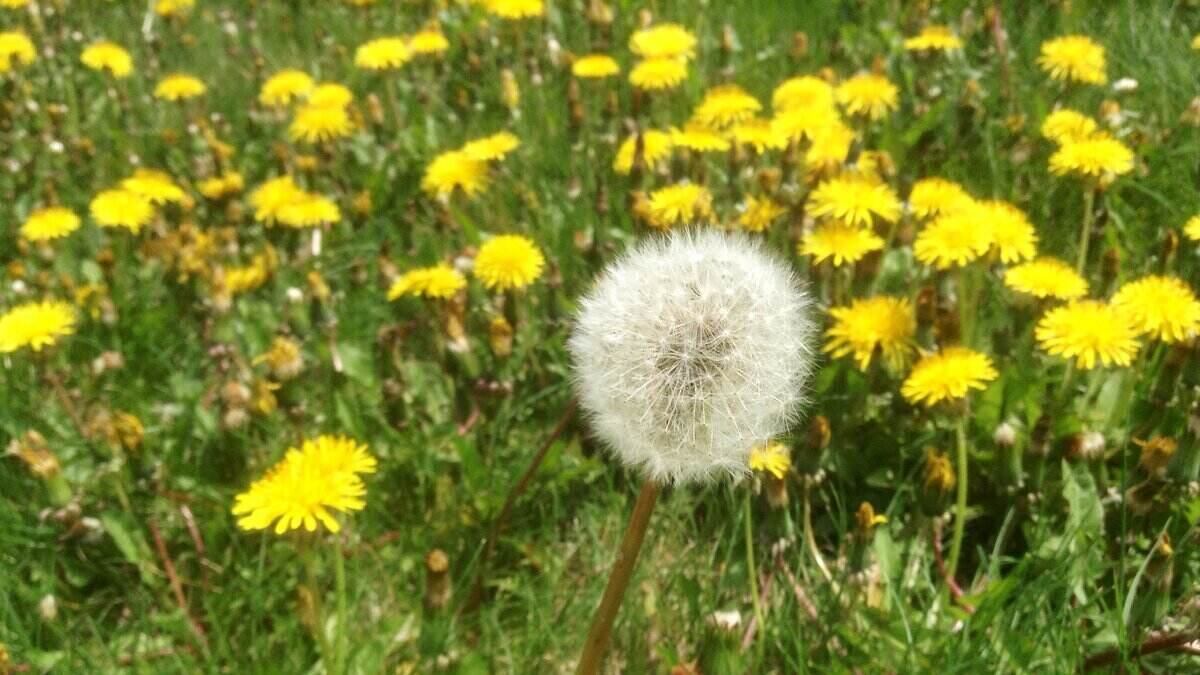
The moment weeds like dandelions, chickweed, crabgrass, and purslane pop up in the grass, you likely dig them up or douse them with a spray bottle full of Roundup or another weed killer. But hold back on your trigger finger and read your weeds first. Identify them correctly to learn what they’re saying about your lawn’s health.

Use Your Weeds as Indicator Species
Before you kill your lawn weeds, Debbie Dillon, a horticulture extension agent at North Carolina State University, suggests identifying the species of weeds growing in your lawn and using them as a tool to learn more about your soil.
Common lawn weeds are called “indicator plants,” she explains. Their presence indicates that certain soil conditions are present.
Weed identification can tell you what conditions are in your soil, allowing you to identify the right weed control measures.
“A soil test will give you the basics about pH and soil fertility, but the weeds in your garden can give you even more information,” Dillon says.
These common weeds can alert you to problems in the soil or in your lawn care habits.
Common Lawn Weeds
| Bindweed | Clover |
| Common Chickweed | Crabgrass |
| Creeping Charlie | Dandelions |
| Knotweed | Mallow |
| Nutsedge | Oxalis |
| Plantain | Purslane |
| Spurge | Thistle |
Understanding why specific weeds are in your lawn is the first step in understanding your soil, what it needs, and how you can help it reach its full potential.
- Bindweed: You may need to water your lawn more
- Clover: Your yard may have compacted, acidic soil, or low nitrogen levels
- Common Chickweed: The soil is moist or poorly drained
- Crabgrass: You have high fertility soil
- Creeping Charlie: Thrives in damp soil and shady areas
- Dandelions: Acidic soils with high potassium levels and low calcium levels
- Knotweed: Likes compacted soils, usually found along foot trails
- Mallow: Your yard requires more lawn and garden care
- Nutsedge: You have poorly drained soil, you probably water too much
- Oxalis: This indicates moist, poor-drained soils; high in magnesium, low in calcium
- Plantain: The soil is damp and compacted
- Purslane: Thrives in well-drained sandy soils
- Spurge: There’s not enough grass in your lawn
- Thistle: Your yard may need more basic care and overseeding
Bindweed
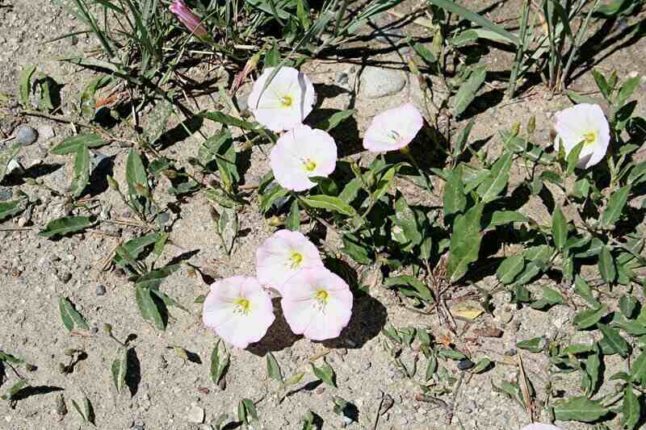
First introduced in the late 1800s, bindweed has become one of the worst invaders in Western states. This perennial weed has many names, including perennial morning glory, creeping jenny, bellbine, sheepbine, and cornbind. Once established, its roots can reach 20 feet.
What bindweed is telling you: You may not be watering enough. It outshines almost all other plants in tolerating drought and seldom thrives in wet or waterlogged soils.
Clover
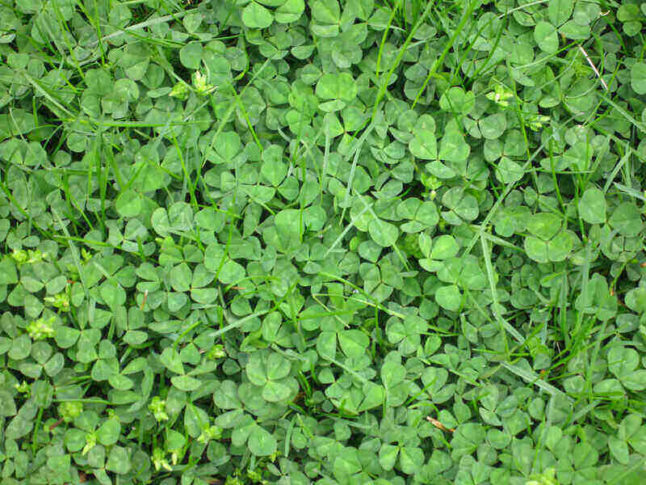
This late spring-flowering plant has many benefits but detracts from the look of a uniform lawn. The most common variety, white clover, was a common lawn seed ingredient until the introduction of broadleaf weed killers.
What white clover is telling you: Yards with compacted soil, acidic soil, and low nitrogen levels are prime sites for clover to pop up. Clover is drought tolerant and thrives in drought-stressed lawns.
It also provides some benefits: The extensive root system and drought tolerance help provide resources to the organisms living in the soil that contribute to a healthy lawn. “Beekeepers love clover and have been educating people about the benefits and a lot more people are open to having clover in their lawns,” Dillon says. “If you have a moist area, you might try planting white clover.”
Common Chickweed
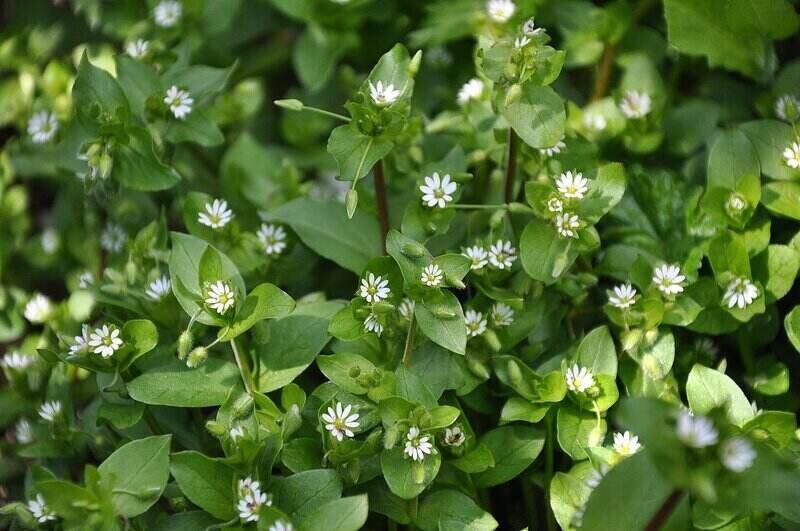
The winter annual weed germinates in the fall and spreads its seeds in the spring.
What chickweed is telling you: Chickweed in your turfgrass indicates that you have moist or poorly-drained soil. Dillion suggests cutting back on irrigation and adding organic matter to make the soil more porous, improving drainage.
Aerating the lawn also helps reduce compaction and allows air, water, and fertilizer to penetrate the soil, which helps reduce the number of weeds. If you have chickweed or other weeds that are signs of soggy soil, you may also consider removing the grass and planting a rain garden, says Dillon.
The common chickweed is very similar in appearance to its cousin, the mouse-ear chickweed.
Crabgrass
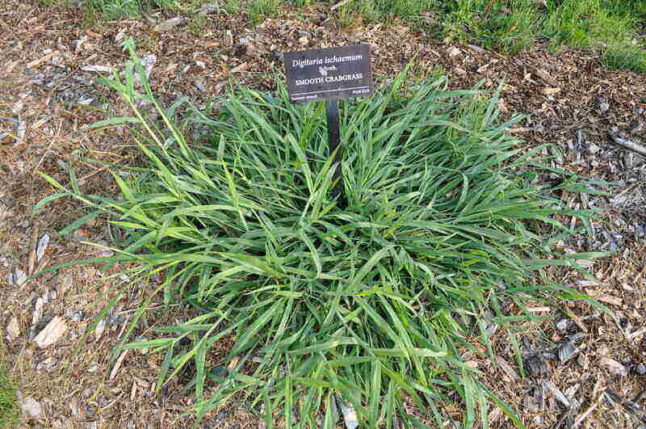
It’s a low-growing, fast-spreading grassy weed. It’s most vigorous in taller grass.
What crabgrass is telling you: A lawn filled with crabgrass could indicate high soil fertility.
“High soil fertility could be a sign that you are over-fertilizing and putting too much nitrogen on your lawn,” Dillion says. “You should test your soil to see what nutrients it needs.”
Pre-emergent herbicides, applied in early spring before the soil temperature rises and seeds start germinating in late spring to early summer, is the most common and effective treatment.
Creeping Charlie
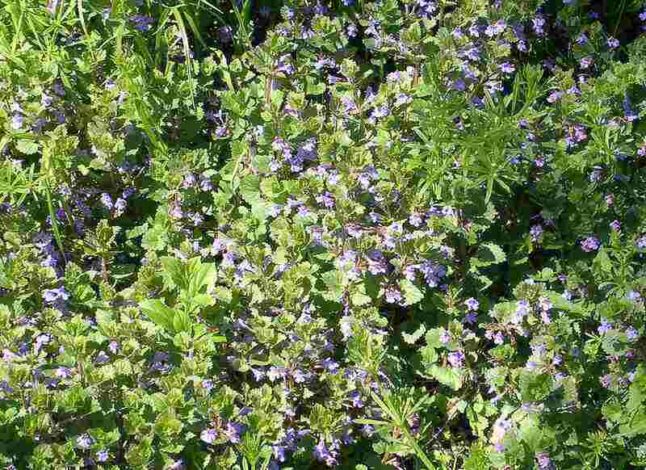
Bright green leaves with scalloped edges mark the creeping Charlie. The “creeping” part comes in from its growth pattern: It relies on above-ground runners called stolons.
What creeping Charlie is telling you: Because it likes shaded areas with damp, fine soils, eliminate those conditions. Trim back the shade and cut back the moisture where either of those is possible. Amend the soil to reduce the fineness of its texture so it can’t creep so easily.
Dandelions
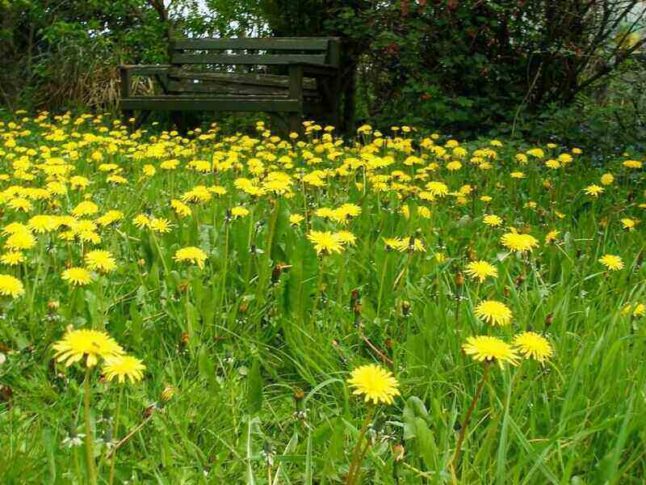
Dandelions are opportunist broadleaf weeds whose yellow flowers mature to puffable white balls, and, Dillion says, it will be a continual battle to control them.
What dandelions are telling you: Acidic soils with low calcium levels and excessive potassium allow dandelions to thrive. Test soil pH to see if your lawn is too acidic. You can add limestone (calcium carbonate), bone meal, or crushed oyster shells to help reduce the acid in the soil and make it more alkaline, which will make it less hospitable to the ubiquitous yellow weeds.
Knotweed
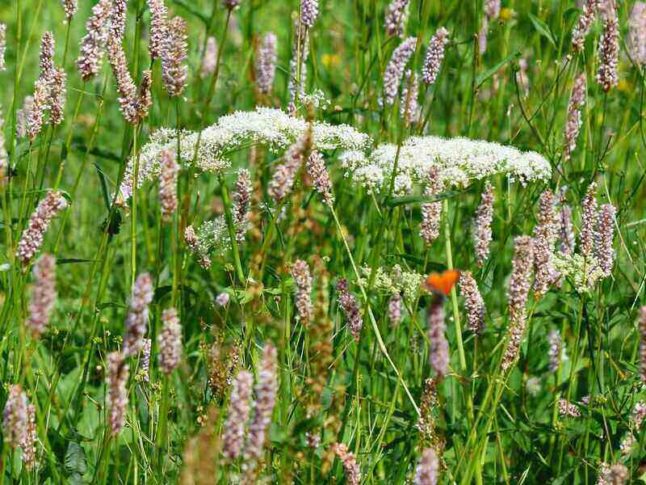
There are more than 130 species of the fast-spreading summer annual.
What knotweed is telling you: Knotweed thrives in compacted soils and often pops up along well-worn paths created by heavy foot traffic.
“Aerating the soil and following up with topdressing with compost can help loosen the soil,” Dillon says. “Adding organic matter [with compost] acts as a slow-release of nutrients and the earthworms and beetles will help mix it into the existing soil.”
Mallow
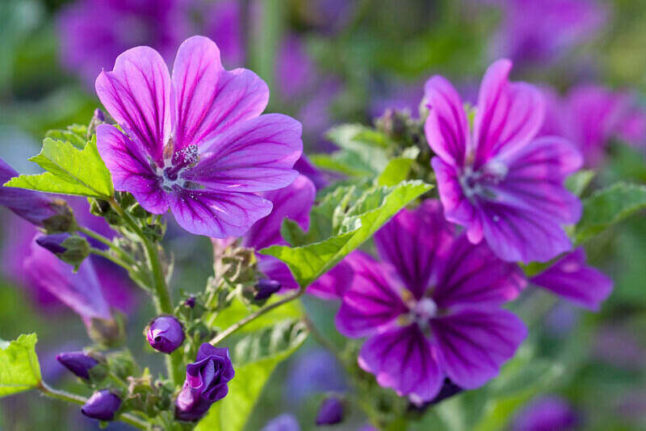
Cotton, hibiscus and okra are members of the same family of plants. One variety even contributed a key ingredient to marshmallows. But for regular homeowners, the common mallow in the lawn is just a crinkly leafed weed. This annual (or biennial) develops a deep taproot that makes it tough to pull.
What mallow is telling you: You’re not looking over your lawn or garden enough. The plants begin growing with the first rains of the fall, but become woody and tall if they’re allowed to take root.
Nutsedge
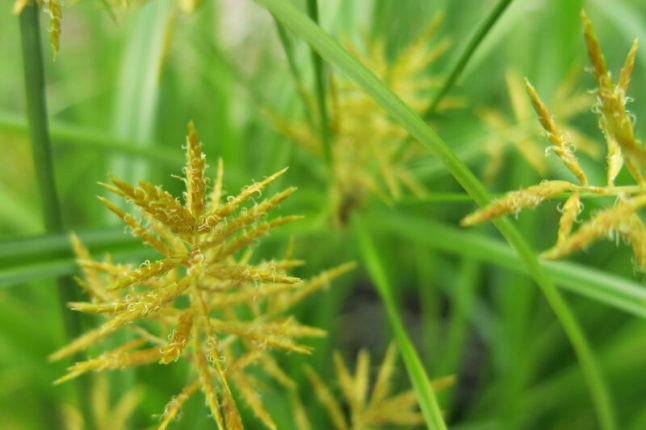
Photo Credit: NY State IPM program at Cornell / Flickr / CC 2.0
Stiff, grass-like blades wider than most other turfgrasses mark nutsedge. It’s often called nutgrass but is a true sedge. Once established, it is drought tolerant and tough to kill, spreading by underground runners (rhizomes) that can reach a foot or more in length.
What nutsedge is telling you: You water too much on poorly draining soil. Amend the soil with sand to help it drain faster.
Oxalis
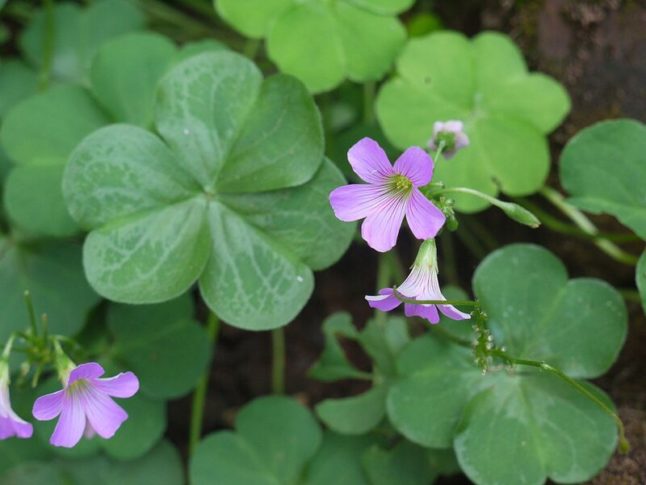
This common weed, also known as wood sorrel, produces small pink, yellow or white flowers.
What oxalis is telling you: Similar to common chickweed, oxalis is an indicator of moist, poorly drained soils. Oxalis growing in your lawn is also a sign the soil is low in calcium and high in magnesium.
Replacing turf with a rain garden is one option to improve drainage. Drain tiling, which involves installing a series of perforated pipes to redirect water and remove moisture and help water drain, is another — but Dillon warns that it’s expensive.
Plantain
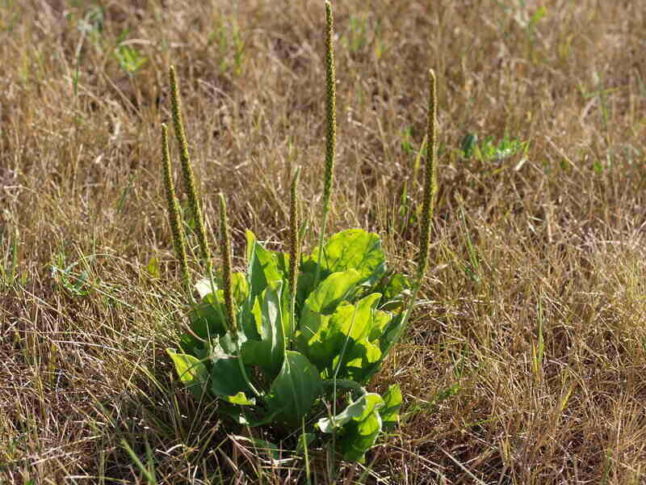
Plantain weed is never hiding — this perennial’s big broad leaves, 2-6 inches in length, and thick stalks make it easy to spot. Both the common broadleaf plantain and buckhorn plantain varieties were introduced from Europe, and have some medicinal applications. But unless you’re growing them to cure respiratory ailments, they’re just weeds.
What plantain is telling you: You have damp and compacted soil. Aerate your soil, and avoid overwatering. Mowing your grass to the proper height also helps by removing any seedheads before they germinate. All these good lawn care techniques will encourage a healthier lawn that should “shade out” plantain seedlings.
Purslane
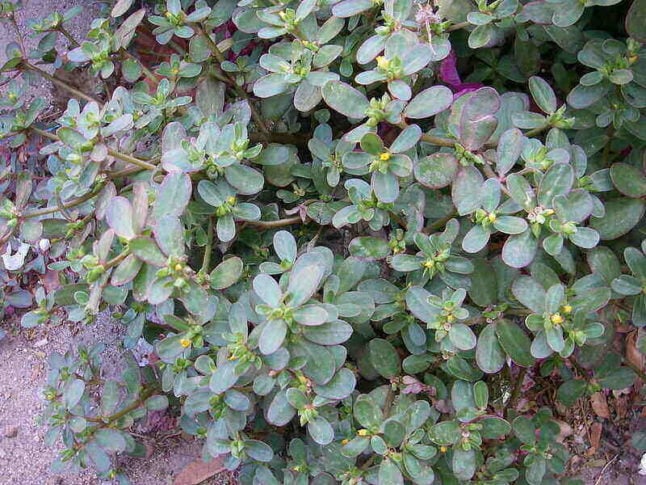
This fast-growing, drought-tolerant plant will outcompete just about any other weed. It forms dense mats on red stems. Edible varieties are coveted in some high-end restaurants, but for most of us, it’s just an obnoxious pest.
What purslane is telling you: You may be doing things right. While an opportunist, purslane does best in well-draining soil with a lot of sand and loamy organic material —exactly what you’re supposed to create as the soil for an ideal lawn. It prefers new lawns and poorly maintained lawns, so if that includes you, get out the hoe, the herbicide, or both.
Spurge
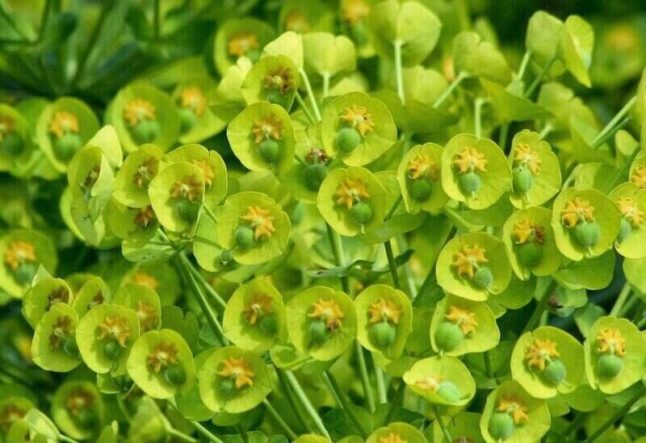
A low-spreading summer annual that forms a dense mat that sends shoots in all directions from a single point and hugs the ground.
What spurge is telling you: You don’t have enough grass in your lawn. Most weedy spurges don’t like competition, so they burst forth in bare patches. Aerate and overseed to create a healthy lawn that will outcompete spurges. Never done that before? Follow our guide, How to Aerate and Overseed Your Lawn.
Thistle
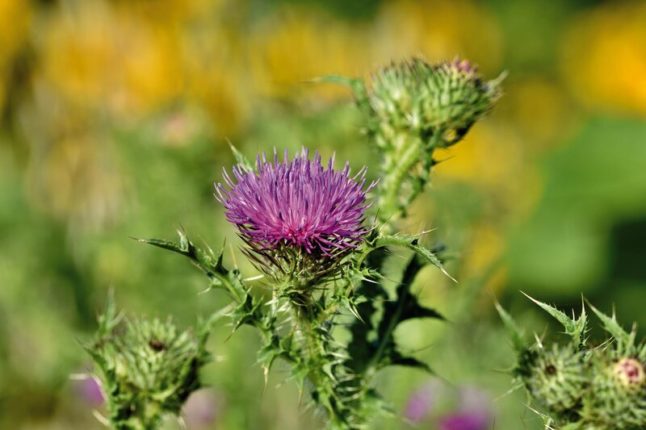
You’ll know when you have thistle. Its spiny leaves and stalk will introduce you if you brush against it. If a new plant is left on its own, it can grow up to 6 feet tall. Don’t let it get to that stage: Root systems of a mature thistle can reach 10 feet.
What thistle is telling you: You may have slacked off in your basic lawn care, especially if it has been a cool, wet summer and fall — those are the times when thistle seed production shoots up. If you see them, your lawn wasn’t healthy enough to have out-competed the thistle. Hand-remove them and overseed.
FAQ About Weeds
If weeds have already sprouted, use a selective post-emergent herbicide formulated for your weed and your grass type to avoid killing your grass. If you have an established lawn (not a newly seeded lawn), apply a pre-emergent herbicide that is suited for your grass type to get ahead of annual weeds and avoid killing your grass.
No, there are about 8,000 plant species that we consider to be weeds, so you can’t get rid of weeds permanently. However, there are simple things you can do to reduce their numbers. The simplest thing to do to get rid of weeds is to follow tried-and-true lawn care practices to promote a full, healthy lawn.
In addition to a good lawn care regimen, using pre-emergent herbicides (to prevent weeds from germinating) and post-emergent herbicides (once they’ve sprouted) will reduce weeds in your lawn.
Yes, despite their reputation as nuisances in and around the garden, certain weeds can actually be beneficial for you and your yard.
For example, both clover and dandelions are early spring bloomers. As such, they provide necessary food for pollinators early in the season. Weeds can also add organic matter, provide medicinal benefits, and help aerate the soil with their roots.
However, not all weeds are beneficial. Undesirable weeds spread aggressively, stealing nutrients and water from desirable plant life, and may ultimately disrupt the ecosystem in an area. If you have a weed that you need help eliminating from your landscape, contact your local Cooperative Extension service for information and advice.
Reading Your Weeds
Reading your weeds can provide important clues about your lawn but the best defense against weeds is a healthy lawn.
Dillion recommends choosing the right types of grass cool season or warm season species depending on your location, aerating the lawn, letting the grass grow a little longer to promote healthier roots, and fertilizing at the correct times (and with the right levels of nutrients) can contribute to a healthier lawn and fewer weeds.
Don’t let weeds control how you spend your time in your garden or flower bed. For additional help understanding your lawn and controlling weeds, consider contacting local lawn care professionals.
LawnStarter participates in Get Sunday’s affiliate advertising program. LawnStarter may earn revenue from products promoted in this article.
Main Image Credit: Mike Mozart / Flickr / CC BY 2.0